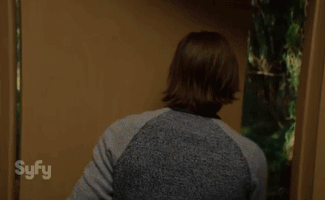Fillory arguably plays a larger role in The Magicians book series than Brakebills does. Little details about Fillory have been sprinkled through the show so far and there will certainly be a lot of exposition in the episode but this is a whole new world we're talking about. Naturally there's going to be a lot of new information to fit into a small amount of time. If you know about Narnia a lot of Fillory will feel familiar but there are some very important differences. I'm happy to offer the benefit of my knowledge as someone who has read the books, not least out of envy for those who have read A Song of Ice and Fire.
Of course, the TV show is far from a direct adaptation of the books so all of this should be taken with a grain of salt. Many of the same conclusions are reached but in a different order on the timeline, and both timelines go in the same direction. At this point of the TV series that direction is towards Fillory so it would make sense for the televised events in this magical land to be similar to the literary ones. However, if you saw the last episode I can understand assuming that the show and books are two different branches of the same clock tree but that seems unlikely since both time loops end in different ways.
Now, about Fillory. The most important thing to know is that Fillory is very dangerous. Narnia has wars and curses and evil witches but it isn't very scary. Somehow it's easy to imagine yourself getting by just fine. In Fillory it is obvious that anything could happen. People get hurt. Some might be tempted to call it gritty and/or realistic but that's not really it. It would be more accurate to say it's simply deeply flawed.
The magical land's imperfection is probably best personified by its deities. Instead of Aslan, Narnia's messianic lion, Fillory is guarded over by two rams named Ember and Umber and they're both kind of dicks. They're not at all the kind to willingly sacrifice themselves or their only begotten sons. Also, they have peanut shaped eyes. It's very important to Lev Grossman that you know that sheep have peanut shaped eyes.
Speaking of John and his third sixteenth, C.S. Lewis' Chronicles of Narnia are famously full of Christian allegory. At one point Aslan implies that he is Jesus Christ himself in another form by another name in a different world. In The Magicians, on the other hand, Grossman explores a much broader view of religion, philosophy, and spirituality. If there's one defining doctrine of Fillory it's an anecdote about turtles. It goes like this: A woman interrupts a scientist's lecture, (let's say it was Neil Degrasse Tyson just for example) and she says "This is nonsense. Any logical person can see that the world is flat and sits on the shell of a giant turtle." Tyson says, "Okay, I'll bite, what's that turtle standing on?" in that smug way he has about him. The woman then replies "Nice try, but obviously it's turtles all the way down."
In the TV series, much like the books, spirituality plays a major part, especially in Julia's story arc. However, the series skips over a particularly violent scene in her journey. That brings me back to the aspect of Fillory that is most deserving of forewarning; it can be a vicious place. I assume that Julia had such a pleasant interaction with Our Lady Underground because the real pain is coming in the finale. If you don't care for that kind of think you might want to brace yourself.
Although, there's one way that Narnia and Fillory are very similar: they are both magical. I don't just mean that magic is involved. I mean that under the violence and the dickishness there is something truly childlike and wondrous. Fillory provides a home to the Brakebills alumni and helps shape them into better, stronger people. It has talking animals and wise old warriors and magnificent quests. If the on screen arrival of Fillory is anything like the books it will be savage and gut-wrenching but marvelous and I can't wait.

No comments:
Post a Comment